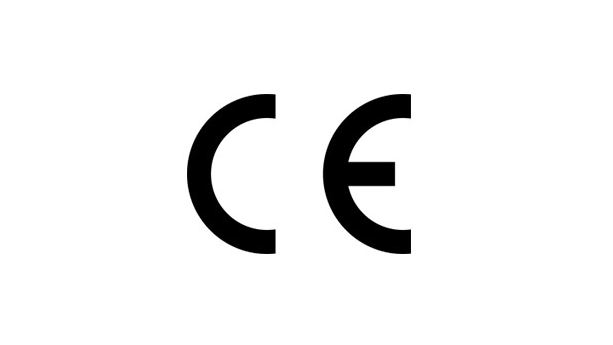The Batteries Regulation is a new regulation that sets requirements for batteries and waste batteries placed in the EU market. It covers all types of batteries unless an exemption applies.
In this guide, we explain when the regulation will begin to apply, and its differences from the prior Batteries Directive. We also outline documentation, labelling, EPR and other requirements.
Content Overview

FREE CONSULTATION CALL (US, EU & UK)
- Request a free 30-minute call with Ivan Malloci to learn how we can help you with:
- Find product requirements
- Certification and labeling
- Lab testing
What is the Batteries Regulation?
The new Batteries Regulation aims at improving safety and minimising the environmental impact of batteries placed in the market, by making them sustainable through their entire life cycle.
This regulation is a CE marking regulation that mandates battery producers to adhere to requirements such as those regarding:
- Labelling
- Documentation
- Testing
- Extended producer responsibility
It also:
a. Repeals the Battery Directive that was published in 2006.
b. Amends the Waste Directive concerning extended producer responsibility (EPR) requirements.
c. Amends the Market Surveillance Regulation, by requiring batteries to comply with its requirements.
When will the Batteries Regulation apply?
The Batteries Regulation will begin applying from 18 February 2024 onwards. However, some articles will only begin to apply at a later stage. You can find the relevant provisions in Article 96.
The Batteries Directive will be repealed with effect on 18 August 2025. Article 95 lists provisions for this repeal, which includes information on articles that will keep applying for a longer time.

How does the Batteries Regulation differ from the Batteries Directive from 2006?
The new Batteries Regulation is a CE marking regulation, and many of its requirements are different from the requirements of the Batteries Directive of 2006. We list the main differences in the table below.
| Requirement | Batteries Regulation (2023) | Batteries Directive (2006) |
| Restricted Substances | a. Mercury (0.0005%)
b. Cadmium (0.002%) c. Lead (0.01%) |
a. Mercury (0.0005%)
b. Cadmium (0.002%) |
| CE marking | Required | Not required |
| Traceability information | a. Product information
b. Manufacturer information |
Not required |
| Other labelling information | a. General information as listed in Part A of Annex VI (e.g., weight, capacity)
b. Separate collection symbol c. QR code d. Notified body identification number (if required) e. Pictograms (if applicable) f. Carbon footprint label (if required) g. Additional information as listed in Article 13 (if required) |
a. Separate collection symbol
b. Chemical symbol c. Battery capacity |
| Declaration of Conformity | Required | Not required |
| Technical documentation | Required | Not required |
| Other documentation | a. Instructions
b. Test reports c. Carbon footprint declaration (for some types of batteries) d. Digital battery passport (for some types of batteries) e. Documents listed in Articles 8 and 10 (for some types of batteries) |
Removal instructions (for appliances) |
| Notified body | Required (for some types of batteries) | Not required |
| Lab testing | Required | Not mentioned, but generally required |
| EPR / Registration | a. EPR: required
a. Registration: required |
a. EPR: not mentioned
b. Registration: required |
Which products will be covered by the Batteries Regulation?
This regulation covers the following types of batteries:
- Portable batteries
- Starting, lighting and ignition batteries (SLI batteries)
- Light means of transport batteries (LMT batteries)
- Electric vehicle batteries
- Industrial batteries
It also covers batteries that are incorporated into or added to products, or specifically designed for it.
The regulation does not cover batteries specifically designed for incorporation into military and spacefaring equipment, as well as equipment designed specifically for the safety of nuclear installations.
Restricted substances
Annex I of the regulation lists restrictions for three substances, regardless of their incorporation into appliances. The restricted substances are as follows:
a. Batteries should not contain more than 0.0005% of mercury by weight.
b. Portable batteries should not contain more than 0.002% of cadmium by weight.
c. Portable batteries should not contain more than 0.01% of lead by weight.
The regulation also mentions that batteries must comply with the restrictions set in Annex XVII to REACH and Article 4(2)(a) of the End of Life Vehicles Directive.
General Requirements
According to Article 5, batteries are only permitted for sale or service if they comply with:
- Safety requirements
- Sustainability requirements
- Labelling requirements
- Information requirements
Batteries also should not endanger:
- Human health
- Safety of persons
- Safety of property
- The environment
Standards
You can use relevant harmonised standards, which can be found on the CENELEC website by filtering the field “Legal Framework” for “2023/1542 (BAT)” to achieve a presumption of conformity with the requirements of the regulation.
This means that, if your product complies with the requirements of the standards, it is assumed to also comply with the requirements of the regulations that are covered by such a standard (e.g. safety requirements). You can find more details on Article 15.
Here are some examples of these standards:
a. EN IEC 62485-1 – Safety requirements for secondary batteries and battery installations – Part 1: General safety information
b. EN IEC 6261 – Secondary cells and batteries containing alkaline or other non-acid electrolytes – Safety requirements for secondary lithium cells and batteries, for use in industrial applications
c. EN 60896-22 – Stationary lead-acid batteries – Part 22: Valve regulated types – Requirements
Conformity Assessment Procedures
As per Article 17, producers of batteries must carry out one or more of the conformity assessment procedures listed in Annex VIII to ensure their adherence to various requirements.
The conformity assessment that you must carry out depends on the kind of battery in question, and with which articles they must comply.
Batteries manufactured in series, and for which the requirements are established in Articles 6, 9, 10, 12, 13, and 14, are subject to either:
- Module A – Internal production control, or
- Module D1 – Quality assurance of the production process
Batteries not manufactured in series, and also for which the requirements are set out in the articles mentioned above, are subject to either:
- Module A – Internal production control, or
- Module G – Conformity based on unit verification
Batteries that must comply with requirements set in Articles 7 and 8 are subject to:
- Module D1 – Quality assurance of the production process, or
- Module G – Conformity based on unit verification
Batteries previously subject to preparation for re-use, repurposing, or remanufacturing are subject to Module A.
We briefly summarise the different requirements in the table below.
| Requi rements |
Module A | Module D1 | Module G |
| Labelling | CE marking | CE marking | a. CE marking
b. Notified body’s identification number |
| Documen tation |
a. Declaration of conformity
b. Technical documentation c. Test reports |
a. Declaration of conformity
b. Technical documentation c. Instructions d. Test reports e. Quality system documentation f. Notified body reports g. Quality records |
a. Declaration of conformity
b. Technical documen c. Test reports e. Certificate of conformity |
| Notified body | Not required | Required | Required |
| Testing | Required | Required | Required |
Documentation
Producers must prove their products’ compliance with the regulation requirements by preparing the applicable documentation.
Declaration of Conformity
Producers must submit a Declaration of Conformity for their batteries. Annex IX of the regulation contains the full list of information that companies should provide in their Declaration of Conformity. It includes items such as:
- Battery model
- Manufacturer’s name and contact details
- Object of declaration
- References to relevant standards
Technical documentation
You should draft technical documentation containing various pieces of compliance information. Note that the content of the technical documentation might vary depending on the conformity assessment procedure performed, and that Annex VIII contains the full list of requirements for each module.
The three assessment modules (A, D1, and G) share requirements such as:
- The battery’s general description
- A specimen of the label
- A list of harmonised standards
- Test reports
Modules D1 and G also require the following:
- A list of technical specifications followed
- Study supporting carbon footprint values
- Study supporting recycled content share
Carbon Footprint Declaration
Producers must provide a carbon footprint declaration for the following battery types:
- Electric vehicle batteries
- Rechargeable industrial batteries with capacities exceeding 2 kWh
- LMT batteries
The declaration must provide at least:
- Manufacturer’s administrative information
- Battery model information
- Battery’s carbon footprint
- Battery’s Declaration of Conformity identification number
You can find the full list of required items in Article 7 of the regulation, as well as details regarding items such as the calculation of the carbon footprint, and when the declaration will start applying.
Instructions
Producers are required to provide instructions for batteries or products containing batteries and make them publicly available online. They should also ensure that the instructions are written in a comprehensible and readable manner.
Article 12 requires the technical documentation to contain instructions for reducing identified hazards, such as explosions.
Additionally, you must provide safety instructions to end-users regarding:
- Handling waste batteries
- Handling batteries containing lithium
- Risks associated with batteries containing lithium
Test reports
Producers must provide test reports as part of the technical documentation requirements.
Test reports are documents that producers receive from notified bodies or testing companies that indicate whether their products have passed relevant testing, and thus comply with the relevant requirements concerning substance restrictions, safety, and more.
Digital Battery Passport
The digital battery passport applies to the following battery types put into service or placed on the market:
- LMT batteries
- Industrial batteries with capacities exceeding 2 kWh
- Electric vehicle battery
The battery passports for each of the aforementioned batteries must contain information:
- Relevant to the battery’s model
- Specific to the individual battery
- Resulting from the battery’s uses
It should also adhere to other requirements, such as being:
- Accessible via a QR code and a unique identifier
- Accurate, complete, and up-to-date
- Based on open standards
- Regulated
You can find more details and requirements about the battery passport in Articles 77 and 78.
Labelling
The regulation requires batteries and their packaging to be labelled with various items. We explain those requirements below.
CE marking

Producers should adhere to general CE marking principles and comply with several rules and conditions for affixing the CE marking, which should be:
a. Permanently attached to the battery or the packaging and accompanying documents.
b. Affixed before the battery’s sale or usage.
c. Followed by the notified body’s identification number (if required).
d. Followed, if applicable, by marks or pictograms specifying any danger or risk relevant to the battery’s storage, transport, treatment, or use.
General information
A battery’s label should include the traceability and specification information, such as:
- Product identification information (e.g., batch or serial number)
- Company’s identification information (e.g., name, address, and web and email address)
- Place of manufacture
- Date of manufacture (month and year)
- Weight
- Capacity
- Chemistry
- Hazardous substances
- Critical raw materials
You can find more information in Part A of Annex VI.
Separate collection information

Batteries must be marked with the separate collection symbol, which should:
- Be a maximum of 5 × 5 centimetres
- Cover at least 3% of the area of the battery’s largest side
- Cover at least 1.5% of the surface of cylindrical battery cells
- Be 1 × 1 cm if placed on packaging (if the battery is too small)
- Printed above the relevant chemical symbol.
QR code
Batteries must be marked with a QR code, which should provide different items for different batteries, such as listed below:
a. The QR code on LMT batteries, industrial batteries with capacities exceeding 2 kWh, and electric vehicle batteries should provide access to the battery passport.
b. On other battery types, it should provide access to:
- General information on the battery
- Battery capacity information
- Information on the minimum average duration
- Separate collection symbol
- Chemical symbol (e.g., Cd or Pb)
- EU Declaration of Conformity
- A report on the economic operator’s battery due diligence policies
- Information on the prevention and management of waste batteries
c. The QR code on SLI batteries should provide access to the amount of heavy metals, both present in active materials in the battery and recovered from waste, such as:
- Cobalt
- Lead
- Nickel
Carbon footprint labelling requirements
The following types of batteries must carry an obvious, readable, and permanent label that specifies the battery’s carbon footprint and declares the carbon footprint performance class for:
- Electric vehicle batteries
- Rechargeable batteries with capacities exceeding 2 kWh
- LMT batteries
Other labelling requirements
Article 13 mandates different battery types to comply with additional labelling requirements. For instance:
a. Rechargeable portable batteries, LMT batteries, and SLI batteries should be labelled with the battery’s capacity.
b. Non-rechargeable portable batteries should be labelled with the phrase “non-rechargeable.
c. Batteries containing over 0.004% lead and 0.002% cadmium should be labelled with their respective chemical symbols (e.g., “Pb”, “Cd”).
Extended Producer Responsibility
The regulation sets requirements regarding extended producer responsibility (EPR). Battery producers should submit a registration application with their relevant Member States when they first place a battery on the market. Further, they should adhere to the requirements outlined in Chapter VIII of this regulation regarding waste battery management.
Producers may appoint a producer responsibility organisation (PRO) to fulfil EPR obligations on their behalf. Note that EU Member States may mandate producers to appoint PROs based on a given category of battery’s specific and relevant waste management characteristics.
Due Diligence Policies
According to Article 48, companies placing batteries on the market must fulfil, set up, and implement due diligence obligations. They should also have their due diligence policies verified by a notified body.
These requirements do not apply to companies if:
a. Their net turnover is less than 40 million Euro, and
b. Their batteries were subject to preparation for re-use, repurposing, or remanufacturing.
Lab testing
Producers generally need to have their products lab tested for compliance regarding substance restrictions, safety, or other requirements.
After the batteries have been lab tested, and if the products pass testing, you receive a test report indicating their products’ compliance with relevant standards or other requirements.
Here we list a few companies that offer to test against either the Batteries Directive or the new Batteries Regulation:
















 Create compliance checklists for your product (US, EU & UK)
Create compliance checklists for your product (US, EU & UK) 20+ product certificate templates
20+ product certificate templates Create label files
Create label files Book product testing
Book product testing
Does it mean that Lead-acid battery (less than 5kg, sealed which is used in portable devices) is not allowed to be placed in EU market from 18/08/2024 onward?
Lead-acid battery usually contains 40 to 60% Pb.